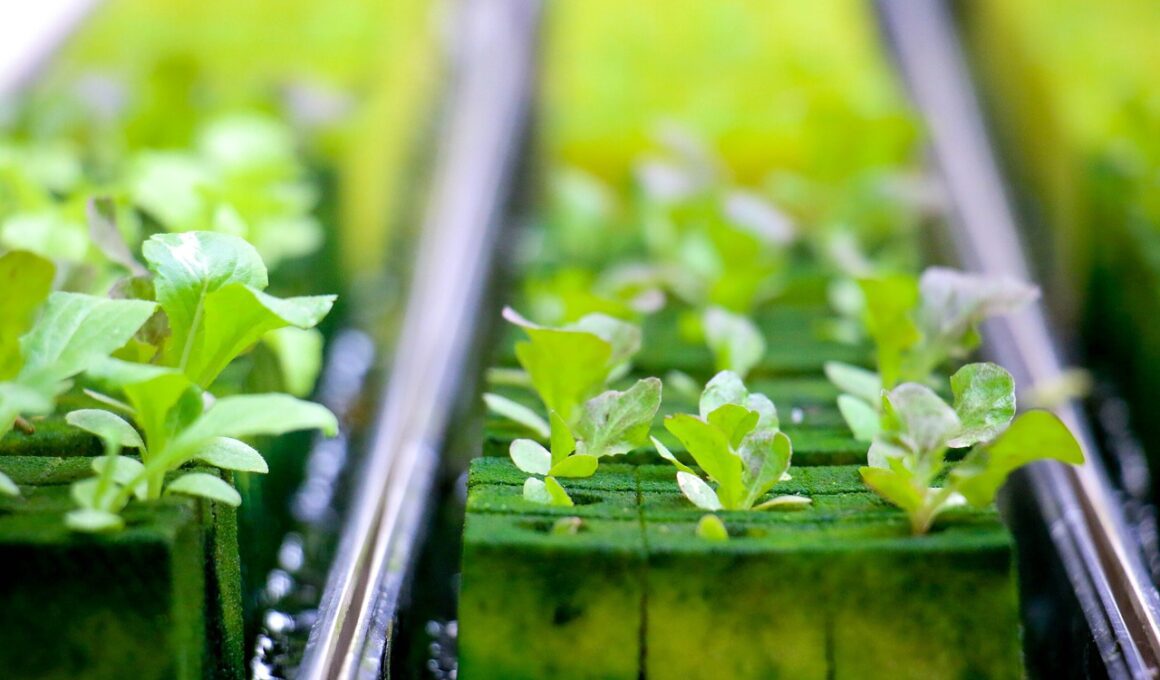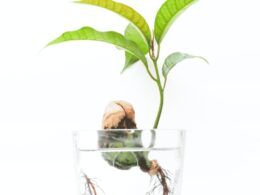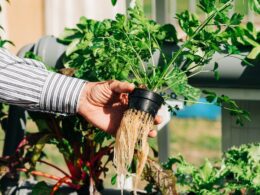Are you frustrated with your hydroponic lettuce looking wilted and lifeless? Don’t worry, you’re not alone. Limp lettuce is a common issue in hydroponics and can be caused by various factors. In this article, we will explore the reasons behind limp lettuce, techniques to revive it, and tips to prevent it from happening in the future.
Hydroponics is a popular method of growing plants without soil. It involves using nutrient-rich water to feed the plants through their roots. While hydroponics has many benefits, it also comes with its own set of challenges.
One of the most common issues that hydroponic growers face is limp lettuce. You may have noticed that your lettuce looks weak, droopy, and lacks the crispness you’re used to. But fear not, by understanding the causes of limp lettuce and implementing some simple techniques, you can revive your lettuce and enjoy fresh, healthy greens in no time.
Understanding Hydroponics
You may not realize it, but hydroponics is a fascinating way to grow plants without relying on soil. Hydroponic systems use water and nutrients to feed plants, creating an environment that is ideal for growth. This method of farming is becoming increasingly popular, especially for indoor farming, because of the benefits it provides.
One of the benefits of hydroponic farming is that it allows you to grow fresh produce year-round, regardless of the weather. This means that you can enjoy fresh vegetables even in the middle of winter. Hydroponic systems also use less water than traditional farming methods, making them more environmentally friendly. Additionally, because the plants are grown in a controlled environment, there is no need for herbicides or pesticides, which makes the produce healthier for consumption.
If you’re wondering why your hydroponic lettuce is limp, there are a few things that could be causing the issue. One possibility is that the water temperature is too high or too low, which can affect the plant’s ability to absorb nutrients. Another possibility is that the pH level of the water is off, which can also affect nutrient absorption. Checking these factors and making adjustments can help your hydroponic lettuce thrive and grow crisp and healthy leaves.
Common Causes of Limp Lettuce
If you’re struggling with limp lettuce in your hydroponic system, there are a few common causes to consider.
Nutrient deficiencies can cause weak, droopy leaves, while overwatering or underwatering can also lead to limp lettuce.
Additionally, temperature and humidity levels can play a role in the health of your plants.
By identifying these potential issues, you can take steps to improve the vitality of your hydroponic lettuce.
Nutrient Deficiencies
Without proper nutrients, your hydroponic lettuce may be exhibiting signs of weakness and stunted growth. Nutrient deficiencies are one of the most common causes of limp lettuce. If your lettuce is showing signs of yellowing or browning leaves, or if the leaves are smaller than normal, then your plant is likely suffering from a nutrient deficiency.
There are several nutrients that are essential to the growth and development of healthy lettuce plants, including nitrogen, phosphorus, potassium, calcium, and magnesium. If your lettuce is lacking any of these nutrients, you’ll need to correct the imbalance by adding the necessary nutrients to your nutrient solution.
It’s important to monitor your nutrient levels regularly and adjust your nutrient solution accordingly to ensure that your plants are getting the right balance of nutrients. With proper care and attention, you can help your hydroponic lettuce thrive and avoid limp, weak plants.
Overwatering or Underwatering
Overwatering or underwatering can significantly impact the health and growth of your hydroponic lettuce, causing it to wither and die if not properly addressed. Signs of overwatering include wilting leaves, yellowing leaves, and slow growth. If you notice any of these signs, it’s important to reduce the amount of water your lettuce is receiving.
On the other hand, signs of underwatering include dry, crispy leaves, brown edges, and stunted growth. If your lettuce is showing these signs, it’s important to increase the amount of water it’s receiving.
It’s important to find a balance between overwatering and underwatering your hydroponic lettuce. One way to do this is by monitoring the moisture levels in the root zone using a moisture meter or by simply sticking your finger into the growing medium to feel for moisture.
Another way is to adjust the frequency and duration of watering based on the needs of your particular lettuce variety. By paying attention to the signs of overwatering and underwatering, and making adjustments accordingly, you can ensure that your hydroponic lettuce stays healthy and vibrant.
Temperature and Humidity Levels
You’ll want to pay attention to the temperature and humidity levels in your growing area to ensure that your hydroponic lettuce is thriving and lush. If the air feels too dry, your lettuce may become wilted and limp. The ideal relative humidity for lettuce is around 50-60%.
You can manage ventilation by using fans to move air around and create a gentle breeze. This will help prevent stagnant air and maintain the right humidity levels.
Controlling pests is also important in maintaining a healthy growing environment for your lettuce. Pests can cause damage to the leaves and roots, which can lead to wilted and limp lettuce. Make sure to regularly inspect your plants for any signs of pests and take action immediately if you notice any.
You can prevent pests by keeping your growing area clean and using natural pest control methods, such as companion planting and introducing beneficial insects. By paying attention to temperature, humidity, and pest management, you can ensure that your hydroponic lettuce is healthy and vibrant.
Does Overharvesting Lead to Limp Hydroponic Lettuce?
Overharvesting hydroponic lettuce can indeed result in limp leaves. When the plants are continuously harvested without giving them enough time to recover, their growth and nutrient absorption become compromised. This leads to weaker root systems and inadequate water uptake, ultimately resulting in limp and underdeveloped lettuce. Proper harvesting practices are crucial to maintaining the quality and vitality of hydroponic lettuce crops.
Techniques for Reviving Limp Lettuce
If you’ve noticed your hydroponic lettuce looking limp, don’t worry! There are techniques you can try to revive it.
First, check your hydroponic nutrient solutions and pH levels. Make sure they’re balanced and the lettuce is getting all the necessary nutrients it needs to thrive.
Another technique is to give the lettuce a cool shower. Place the lettuce under a gentle stream of cool water for a few minutes. This will help to rehydrate the leaves and perk them up. Be sure not to use hot water or submerge the lettuce as this can damage the roots and leaves.
Lastly, consider adjusting the lighting and airflow in your hydroponic system. Lettuce needs adequate airflow and light to grow properly. Make sure your system is set up to provide enough ventilation and light.
With these techniques, you can revive your limp lettuce and enjoy fresh, healthy greens in no time!
Preventing Limp Lettuce
If you want to prevent limp lettuce in your hydroponic garden, there are a few key points to keep in mind. First, make sure you’re consistently monitoring and maintaining your system, checking for any signs of nutrient deficiencies or pests.
Second, choose the right lettuce varieties for your growing conditions, considering factors like temperature and humidity.
And finally, make sure your plants are getting proper lighting and airflow, as both of these factors can have a big impact on their overall health and vitality.
By paying attention to these key points, you can keep your lettuce crisp and fresh all season long.
Consistent Monitoring and Maintenance
Make sure to regularly check and take care of your hydroponic lettuce to ensure it stays healthy and vibrant. This means consistently monitoring the pH levels and nutrient balance of your solution, as well as ensuring proper lighting and temperature conditions. Neglecting any of these factors can lead to limp and unhealthy lettuce.
Consistent maintenance is also crucial in preventing limp lettuce. This includes regularly cleaning and sanitizing your hydroponic system, trimming any dead or yellowing leaves, and ensuring proper air circulation. By staying on top of these tasks, you can ensure that your hydroponic lettuce stays crisp and healthy, providing delicious and nutritious produce for your table.
Choosing the Right Lettuce Varieties
You’ll be thrilled to learn about the different varieties of lettuce that will thrive in your hydroponic system. When choosing a lettuce variety, it’s important to consider your growing conditions and seed selection.
Some varieties will do better in certain environments, so it’s important to do your research before planting. Here are some tips to help you choose the best lettuce varieties for your hydroponic system:
-
Look for varieties that are specifically bred for hydroponic systems.
-
Choose varieties that have a short growing cycle, as they’ll mature quicker and produce more harvests.
-
Consider the size of your system and choose a variety that will fit comfortably in the space you have available.
-
Look for varieties that are disease-resistant, as this will help prevent problems down the line.
-
Consider the flavor and texture of the lettuce, as you want to grow something that you’ll enjoy eating.
By carefully selecting the right lettuce varieties for your hydroponic system, you can ensure that your plants will thrive and produce healthy, delicious lettuce.
Remember to pay attention to your growing conditions and choose seeds that are well-suited to your environment. With a little bit of research and careful planning, you can grow a successful hydroponic garden full of vibrant, crisp lettuce.
Proper Lighting and Airflow
Proper lighting and airflow are crucial for a flourishing hydroponic garden, as they create a healthy environment for your plants to grow strong and vibrant.
When it comes to lighting placement, it’s important to position your grow lights at the correct distance from your plants. If the lights are too close, they can cause your lettuce to wilt and become limp. On the other hand, if the lights are too far away, your plants may not get enough light to grow properly. Aim to place your grow lights about 6-12 inches above your lettuce plants to achieve optimal growth.
In addition to proper lighting placement, airflow circulation is also important for your hydroponic lettuce. Stagnant air can lead to excess moisture, which can cause your plants to become limp and prone to disease. To promote healthy growth, make sure to have proper airflow in your growing area. This can be achieved by using fans or ventilation systems to circulate air throughout your hydroponic system.
By ensuring proper lighting and airflow, you can help your hydroponic lettuce thrive and avoid limp, unhealthy plants.
Troubleshooting Other Hydroponic Issues
If your plants are struggling, don’t give up – there are solutions to common hydroponic issues. Here are a few troubleshooting tips to help you get your hydroponic garden back on track:
-
Check the pH balance of your water: If your lettuce is limp, it could be due to an imbalance in the pH levels of your water. Use a pH meter or test kit to check the pH of your nutrient solution and adjust it as needed. The ideal pH range for hydroponic lettuce is between 5.5 and 6.5.
-
Look for signs of pests: Pests can wreak havoc on hydroponic plants, causing them to wilt and become limp. Check your plants for signs of pests like spider mites, thrips, or aphids. If you do find pests, there are a variety of pest control methods you can try, including introducing beneficial insects, using organic pesticides, or using physical barriers like sticky traps.
Remember, hydroponic gardening can be a learning process, and it’s important to be patient and persistent. By troubleshooting common issues like pH imbalances and pests, you can help your hydroponic lettuce thrive and grow into healthy, vibrant plants. Keep experimenting and trying new techniques until you find what works best for your garden, and don’t be afraid to ask for help or advice from experienced hydroponic growers.
Frequently Asked Questions
What is the best hydroponic system for growing lettuce?
Looking for the best hydroponic system for growing lettuce?
Vertical farming and nutrient film technique are two of the most efficient and effective systems for growing lettuce hydroponically.
Vertical farming takes advantage of vertical space, allowing you to grow more lettuce in a smaller footprint.
Nutrient film technique involves a constant flow of nutrient-rich water over the roots of the plants, providing them with the necessary nutrients to thrive.
These systems are easy to set up and maintain, making them perfect for beginners.
With the right system and care, you can enjoy fresh, crisp lettuce all year round.
How often should I change the nutrient solution in my hydroponic system?
To ensure the health of your hydroponic lettuce, it’s important to change the nutrient solution regularly. The optimal nutrient concentration can be achieved by adding the right amount of nutrients to the water.
However, over time, the nutrient solution can degrade and lose its effectiveness. Signs of nutrient solution degradation include changes in color and odor.
To avoid nutrient deficiencies and ensure your lettuce stays strong and healthy, it’s recommended to change the solution every 1-2 weeks. By maintaining a fresh and balanced nutrient solution, you can help your plants thrive and achieve optimal growth.
Can I use tap water in my hydroponic system?
If you’re considering using tap water in your hydroponic system, it’s important to consider the water quality. Tap water can contain high levels of chlorine, salt, and other minerals that can damage your plants.
It’s important to test your tap water before using it in your system, and consider using a hydroponic nutrient mix to balance out any deficiencies. Additionally, make sure to change your nutrient solution regularly to prevent any buildup of harmful chemicals.
By taking these steps, you can ensure the health and safety of your plants in your hydroponic system.
How long does it take for hydroponic lettuce to grow?
Hydroponic lettuce growth stages can vary depending on the type of lettuce being grown and the specific growing conditions. Generally, lettuce can take anywhere from 6 to 8 weeks to reach maturity.
To ensure optimal growth, it’s important to maintain a consistent balance of nutrients, pH levels, and lighting. Lettuce requires a nutrient solution with high amounts of nitrogen, potassium, and calcium. The pH levels should be between 5.5 and 6.5 for optimal growth. Additionally, lettuce needs at least 12 hours of light each day, with a recommended intensity of 200-400 micromoles/m2/s.
By providing these optimal growing conditions for lettuce, you can ensure a healthy and successful harvest.
What types of lettuce are best suited for hydroponic growing?
When it comes to hydroponic lettuce, seed selection is key. Opt for varieties that have been specifically bred for hydroponic growing, such as butterhead, romaine, and leaf lettuce. These types have a shorter growing cycle and can thrive in the controlled environment of a hydroponic system.
Additionally, it’s important to consider the growth requirements of your chosen lettuce variety, such as pH levels, nutrient balance, and lighting. By selecting the right seeds and meeting their growth needs, you can ensure a bountiful harvest of healthy, vibrant lettuce.
Conclusion
In conclusion, if you’re finding your hydroponic lettuce limp, there are a few things you can do to revive it. First, check for common causes like nutrient deficiencies, overwatering, or poor air circulation. Once you’ve identified the issue, adjust accordingly. For example, if you’re overwatering, try reducing the frequency of watering or use a substrate that promotes better drainage.
If you find that your lettuce is still limp despite your efforts, consider trying a few techniques for reviving it. These might include trimming any yellow or damaged leaves, increasing the humidity in your grow space, or giving your plants a boost of nutrients with a foliar spray.
With a little bit of patience and experimentation, you should be able to get your lettuce looking healthy and vibrant again. Remember to stay vigilant and address any issues as soon as they arise to prevent future problems.









